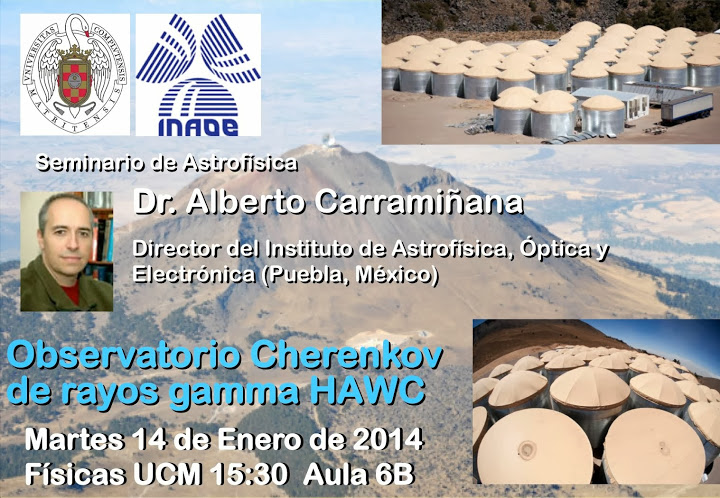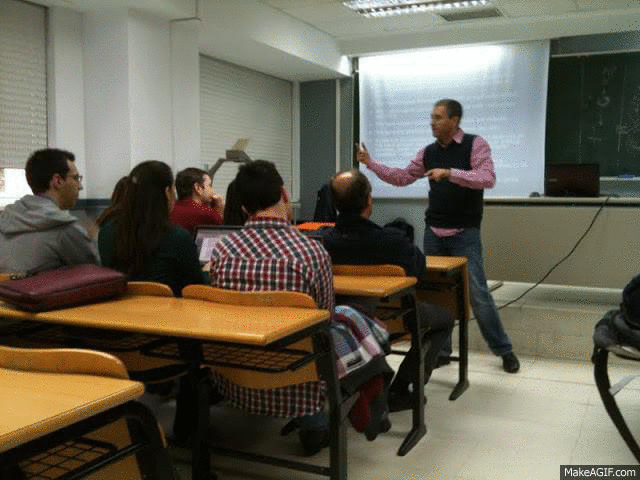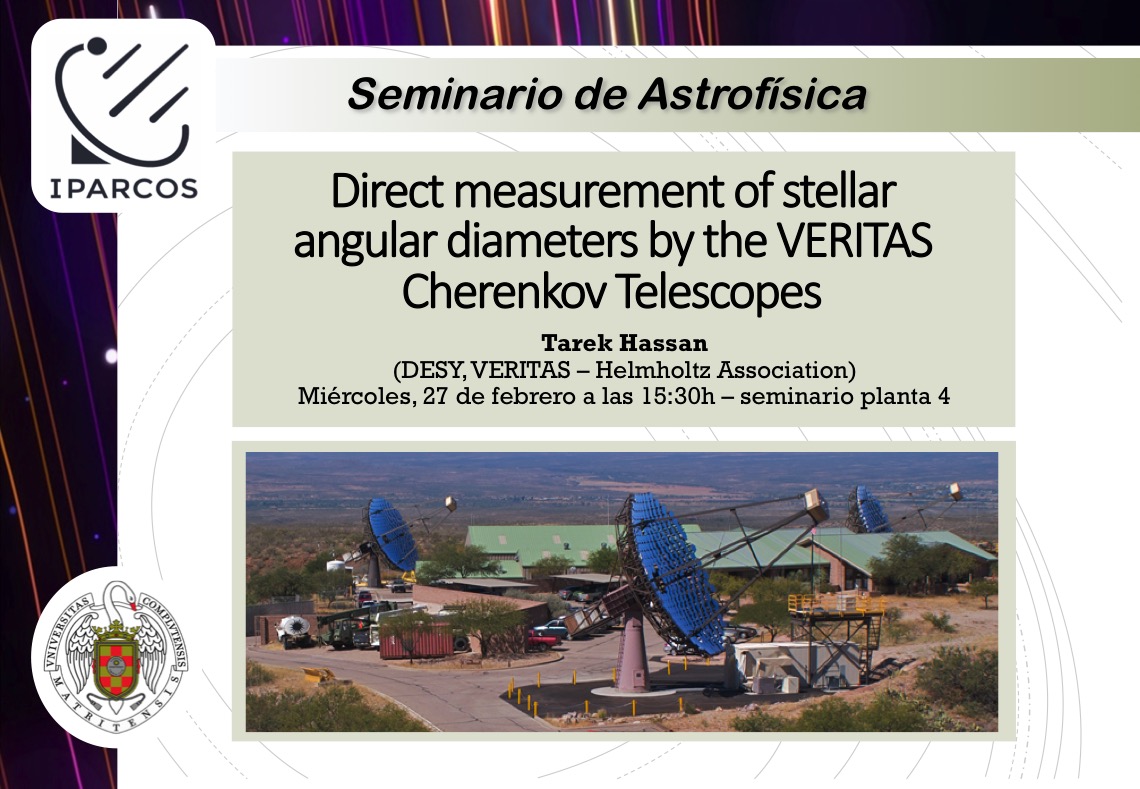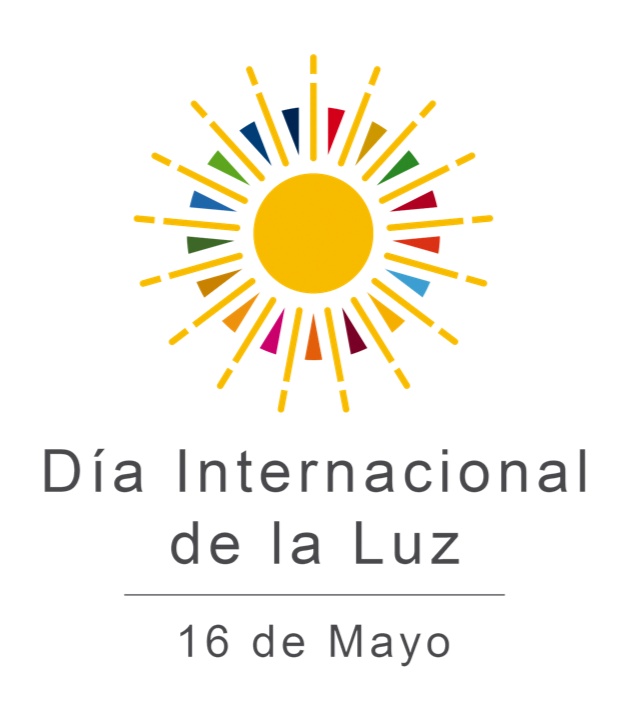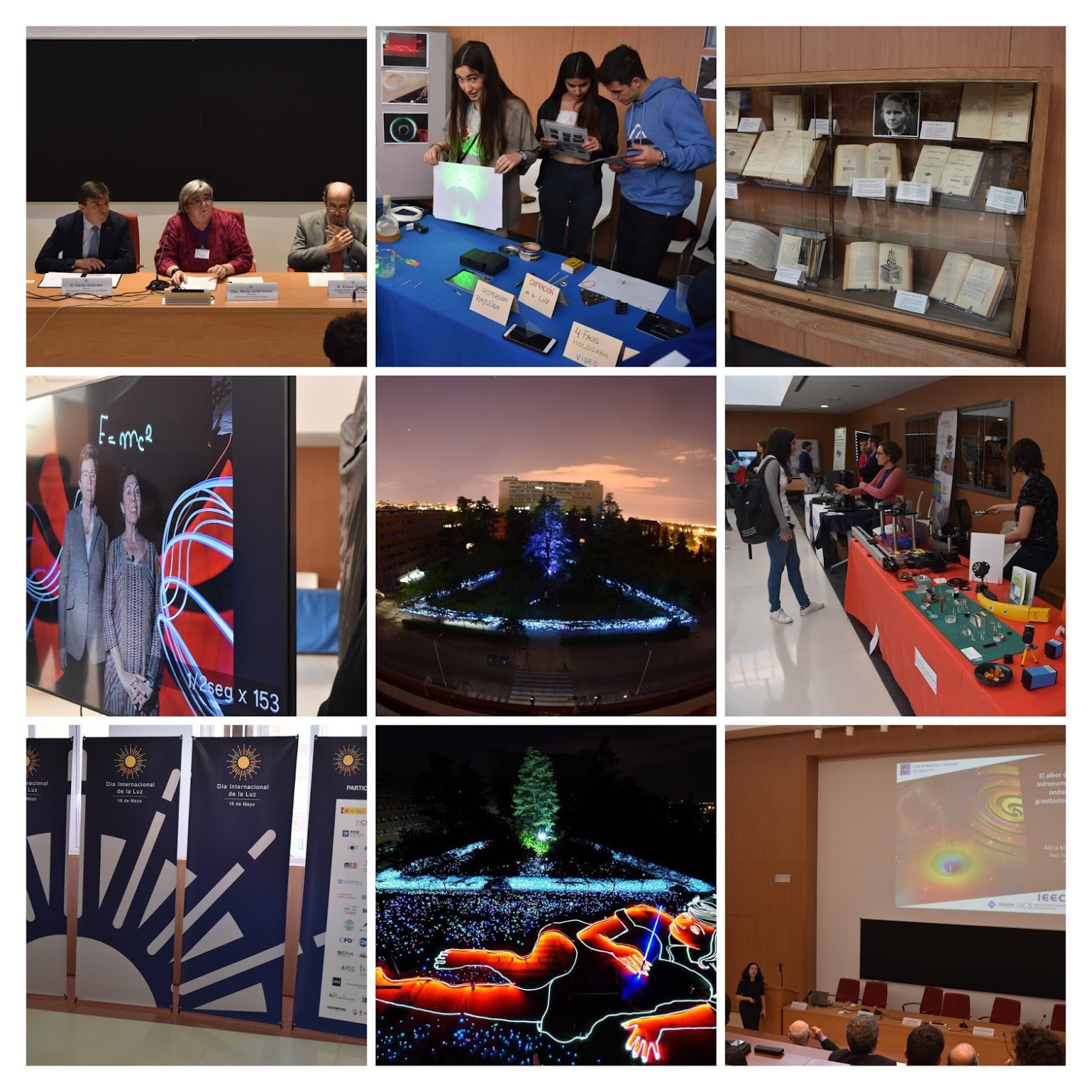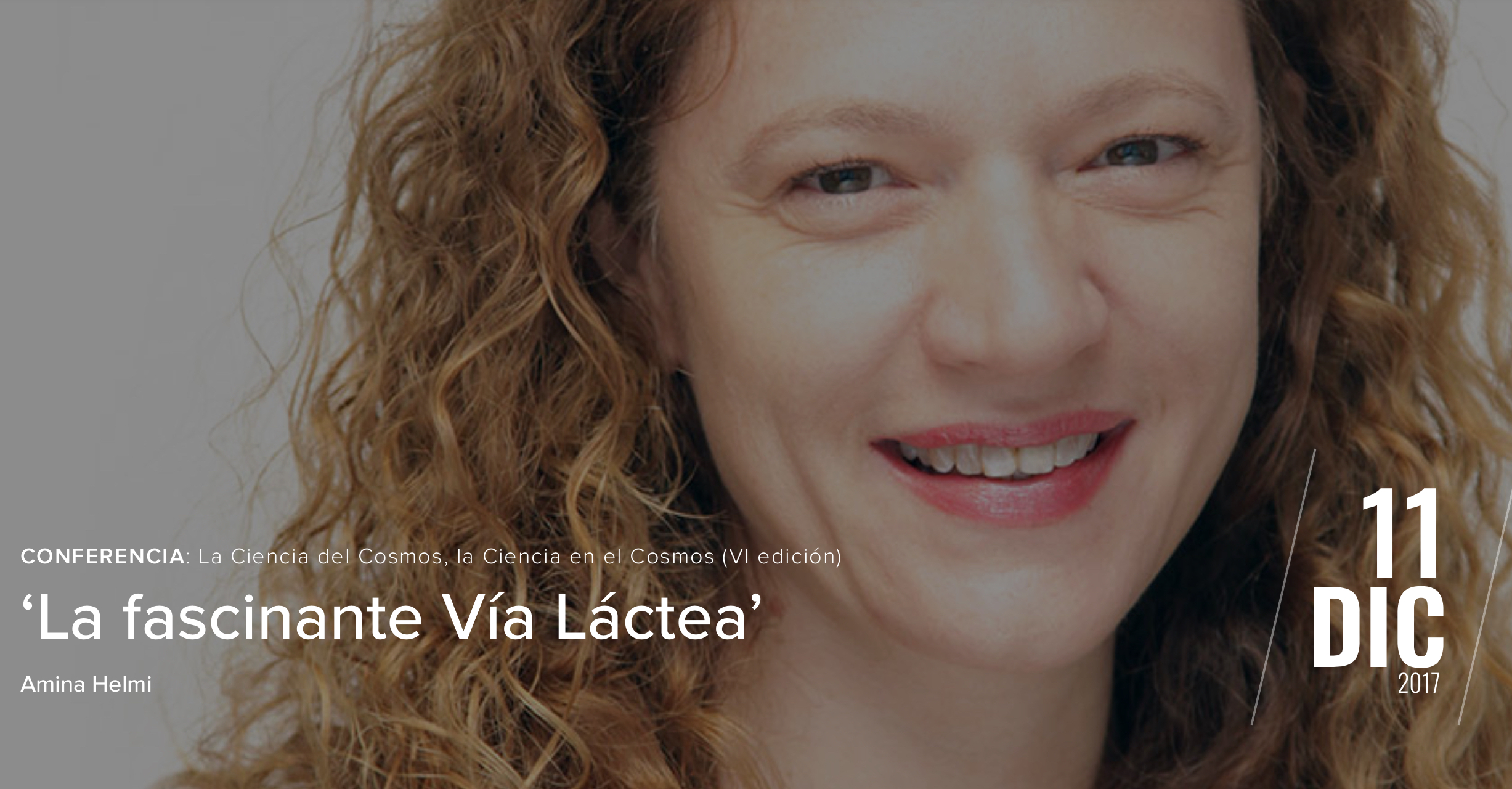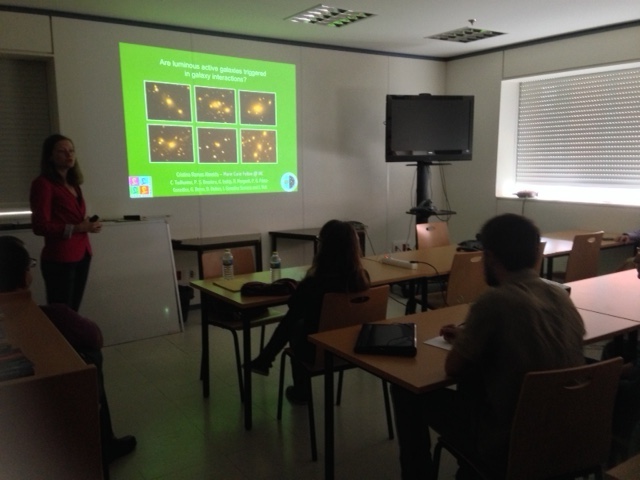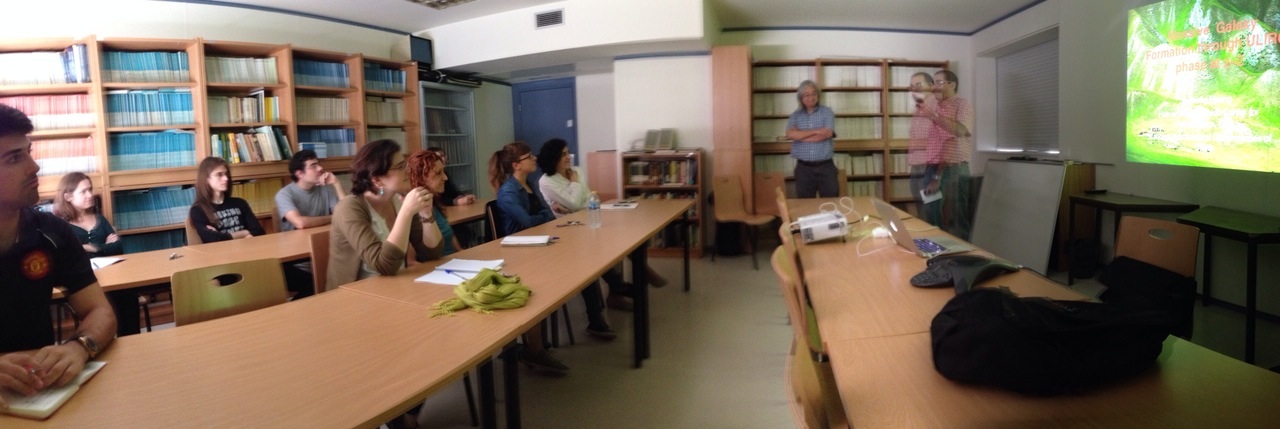Seminarios de especialización
Asistencia a seminarios de la especialidad
Durante el curso, en la Facultad de Ciencias Físicas se organizan múltiples Seminarios sobre temas especializados que se enmarcan en las distintas líneas de investigación. Estos Seminarios se desarrollan fundamentalmente en inglés. Entre estos seminarios, los correspondientes al área de Astrofísica los organiza el Departamento de Astrofísica y Ciencias de la Atmósfera, aunque los otros departamentos involucrados también organizan seminarios similares.
Los Seminarios de la Facultad garantizan una actividad formativa de calidad. No obstante, son igualmente importantes los ciclos de seminarios especializados que se organizan en el resto de centros colaboradores (CEFCA, CAB, IAA, ...).
La Comisión Académica del Doctorado en Astrofísica supervisará que la agenda de eventos se extienda de forma homogénea a lo largo del curso y cubra las diferentes temáticas del programa. También se ocupará de su publicidad.
Durante los dos primeros cursos desde que ingresó en el programa, el doctorando deberá asistir al menos a seis Seminarios de especialización (tres por semestre, con una duración aproximada de 90 minutos). El tutor se encargará de supervisar la asistencia a dichos Seminarios y recomendará los de mayor interés en relación con la actividad investigadora que se está desarrollando. El tutor se encargará de registrar e informar de la actividad en el Documento de Actividades.
Seminarios del curso 2023 - 2024
Seminarios del Instituto de Física de Partículas y del Cosmos de la UCM (IPARCOS-UCM)
Seminarios del curso 2022 - 2023
Seminarios del Instituto de Física de Partículas y del Cosmos de la UCM (IPARCOS-UCM)
Seminarios del curso 2021 - 2022
Seminarios del Instituto de Física de Partículas y del Cosmos de la UCM (IPARCOS-UCM)
|
Ciclo de Webinars FGUCM: "La Astrofísica del siglo XXI": (21 oct al 5 nov 2021) |
|
|
El objetivo fundamental de ciclo es acercar a la comunidad de la UCM los últimos resultados de la investigación y desarrollo de la Astrofísica a nivel internacional. Para ello se impartirán 4 seminarios en remoto por cuatro investigadores de nivel internacional que ocupan puestos de especial relevancia en la Astronomía mundial |
|
| --> Las grabaciones de los webinars se pueden ver en Youtube, ver enlaces aquí. | |
Seminarios del curso 2020 - 2021
Seminarios del Instituto de Física de Partículas y del Cosmos de la UCM (IPARCOS-UCM)
Seminarios del curso 2019 - 2020
Ver la oferta de seminarios de los departamentos e institutos de investigaión del centro:
Seminarios (Dpto. de Fisica de la Tierra y Astrofísica)
Seminarios y Conferencias (Facultad de Físicas)
Seminarios del Instituto de Física de Partículas y del Cosmos de la UCM (IPARCOS-UCM)
Seminarios del curso 2018 - 2019
12 de marzo 2019- Seminario de Astrofísica
"Evidence for cosmological gas accretion in local galaxies".
J. Sánchez Almeida
Martes 12 de marzo de 2019, 15:30 h. Seminario de FTA (4ª planla , 215)
According to the cosmological numerical simulations of galaxy formation, cosmic gas accretion sets the rate of galaxy growth. This ingredient is both central to the theory of galaxy formation, and extremely elusive observationally. One of the best observational supports for this theoretical framework is the fact that galaxies follow the so-called fundamental metallicity relation (FMR; Mannucci+10, Lara-Lopez+10), so that galaxies of the same stellar mass but larger star formation rate (SFR) have smaller gas-phase metallicity (Zg). It is thought to be fundamental because it naturally arises from the stochastic feeding of star-formation from the external metal-poor gas accretion predicted by the models. I will present two recent works of our group on the FMR. First, most star-forming galaxies of the nearby universe (as portrayed by MaNGA) show a local anti-correlation between SFR surface density and Zg (Sanchez-Menguiano+19). Locally enhanced star formation is associated with a drop in metallicity. Second, we prove that the FMR follows from the spatial integration of this local anti-correlation (Sanchez Almeida+19). Local and global laws agree when considering the star-forming galaxies in MaNGA. Thus, understanding the FMR becomes equivalent to understanding the origin of the drop in metallicity of the most actively star-forming regions of each galax
7 de mar 2019 - Conferencia RSEF-FRA
“Mujeres en Ciencia: cómo las damas de la Universidad de Harvard midieron las estrellas”
Dava Sobel
Jueves 7 de marzo de 2019, 19.30 h.
Conferencias de divulgación científica de la Real Sociedad Española de Física en colaboración con la Fundación Ramón Areces.
Sede: Fundación Ramón Areces - salón de actos. Calle Vitruvio, 5. 28006. Madrid.
Aforo limitado. Inscripción gratuita. Interpretación simultánea.
27 de feb 2019 - IPARCOS-UCM seminar
“Direct measurement of stellar angular diameters by the VERITAS Cherenkov Telescopes”
Tarek Hassan (DESY, VERITAS – Helmholtz Association)
Fecha: 27 febrero 2019
Hora: 15:30 h
Aula: Seminario FTA, planta 4, Facultad de CC Físicas
Resumen: The angular size of a star is a critical factor in determining its basic properties. Together with the distance, it provides the physical diameter of the star which, when combined with the effective temperature derived from spectral measurements, can be used to yield luminosity and mass estimates. Direct measurement of stellar angular diameters is difficult: at interstellar distances stars are generally too small to resolve by any individual imaging telescope. This fundamental limitation can be overcome by studying the diffraction pattern in the shadow cast when an asteroid occults a star, but only if sufficiently well resolved in time and when the photometric uncertainty is smaller than the noise added by atmospheric scintillation. Atmospheric Cherenkov telescopes used for particle astrophysics observations have not generally been exploited for optical astronomy due to the modest optical quality of the mirror surface. However, their large mirror area makes them well suited for such high-time-resolution precision photometry measurements. Here we report two occultations of stars observed by the VERITAS Cherenkov telescopes with millisecond sampling, from which we are able to provide a direct measurement of the occulted stars’ angular diameter at the < 0.1 milliarcsecond scale. This is a resolution never achieved before with optical measurements and represents an order of magnitude improvement over the equivalent lunar occultation method. We compare the resulting stellar radius measurements with empirically derived estimates from temperature and brightness measurements, confirming the latter can be biased for stars with ambiguous stellar classifications.
29 de nov 2018 - ESAC Science seminar
“Red dwarfs and the nearest terrestrial planets”
Guillem Anglada-Escudé from Queen Mary University of London, UK
Date: Thursday, 29 November 2018
Time: 10:30 h
Room: B3/B5
Resumen: Exoplanets with properties similar to Earth's can now be systematically detected around the nearest red dwarf stars thanks to the higher sensitivity towards detecting these with current techniques and their high abundance. Despite their potential capabilities of sustaining atmospheres (and therefore support life as we know it) are controversial due to star-planet interactions, they offer unique observing possibilities that should allow
obtaining observational answers in the years to come. I will review where and which planets we can now find, and which observational follow-up opportunities are there depending on the detection method employed.
- 4 Octubre 2018 - Conferencia ciclo "Hablemos de Física":
"Toda la luz del Universo".
Alberto Domínguez, Dept. Estructura de la Materia, Física Térmica y Electrónica de la UCM
Seminarios del curso 2017 - 2018
8 de junio 2018 - ESAC Science seminar
“Seeing the Sky: Visualization & Astronomers”
Prof. Alyssa Goodman from Harvard University)
Date: Friday, 8 June 2018
Time: 10:30 h
Room: D1
Resumen: Astronomers have a long history of visualization. Going back only as far as Galileo, discoveries were made using sketches of celestial objects moving over time. Today, Astronomy inquiries can, and often do, make use of petabytes of data at once. Huge surveys are analyzed statistically to understand tiny fluctuations that hint at the fundamental nature of the Universe, and myriad data sets, from telescopes across the globe and in space are brought together to solve problems ranging from the nature of black holes to the structure of the Milky Way to the origins of planets like Earth. In this talk, I will summarize the state of partnerships between astronomical, physical, and computational approaches to gleaning insight from combinations of scientific and information visualization in Astrophysics. In particular, I will discuss how the glue linked-view visualization environment (http://glueviz.org), developed originally to facilitate high-dimensional data exploration in Astronomy and Medicine, can be extended to many other fields of data-driven inquiry. In addition, I will explain how the current open-source, plug & play, approach to software facilitates the combination of powerful programs and projects such as glue, WorldWide Telescope, ESA Sky, and the Zooniverse Citizen Science platform.
5 de junio de 2018 - Seminarios de Física Teórica, UCM
Título: "Quark matter in the core regions of massive neutron stars (?)"
Conferenciante: Milva Orsaria (Universidad Nacional de la Plata, Argentina),
Time: 14:30 h
Lugar: Seminario de Física Teórica II, UCM
Resumen: The study of neutron stars establishes a direct connection between astronomy and nuclear and particle physics, allowing a better understanding of the behavior of matter under conditions that are difficult to reach in the laboratory. Massive neutron stars provide very important constraints on high-density nuclear matter and its associated Equation of State (EoS), which is still essentially unknown. Depending on neutron star mass and rotational frequency, gravity may compress the matter in the core regions of such objects up to more than ten times the density of ordinary atomic nuclei, thus providing a high-pressure environment in which numerous subatomic particle processes are likely expected to compete with each other and phase transitions to new states of matter, foremost quark matter, may occur. In this talk, I will provide a general discussion of the properties of quark matter and explore its role for the core composition of neutron stars.
16 de mayo de 2018 - Acto Central del Día Internacional de la Luz en la Facultad C.C. Físicas
Título: "DIL, Día Internacional de la Luz" - Programa
Time: 9:30 h a 22:00h
Lugar: Aula Magna, Facultad de C.C. Físicas, UCM
Descripción:
La UNESCO ha aprobado que a partir de 2018 se celebre el 16 de mayo como el Día Internacional de la Luz - DIL (http://www.diadelaluz.es). Esta celebración es un legado de la exitosa conmemoración de 2015 como Año Internacional de la Luz y de las Tecnologías basadas en la Luz. El objetivo es incrementar el conocimiento que la sociedad tiene del papel crucial que la ciencia de la luz y las tecnologías de la luz representan en el mundo actual, cuya presencia se da en campos tan diversos como la medicina, las comunicaciones, la producción de energía, la agricultura, la biología, la astronomía, etc.
En España, el acto central para el Día Internacional de la Luz se celebrará en nuestra Facultad y contará con conferencias de investigadores de prestigio en temas relacionados con la luz y las tecnologías basadas en la luz. En la web española del Día Internacional de la Luz está disponible toda la información sobre actividades y material asociado a este evento, además del programa de la jornada, que también se puede consultar en la página web de la Facultad (http://fisicas.ucm.es). Adicionalmente el Gabinete de Física albergará actividades a lo largo de todo el día con participación de empresas patrocinadoras y entidades dedicadas a la Óptica y a la Fotónica, zonas de experimentos, exposición de pósters, proyección de videos, etc. Por último, la jornada se cerrará con una actividad de light painting abierta a todo el público en el exterior de la Facultad (http://lightmob.esolympus.es/).
Ver galeria de imágenes.
5 de Abril de 2018 - SEMINARIO en Facultad de Matemáticas (Grupo AEGORA), UCM
Título: "Observations of Circumgalactic, Inflowing Gas with CWI"
Conferenciante: D. Christopher Martin (Universidad de Caltech, EEUU)
Time: 13:00 h
Lugar: Facultad de Matemáticas, UCM. Sala Miguel de Guzmán
Descripción:
I describe observations with the Palomar Cosmic Web Imager and the newly commissioned Keck Cosmic Web Imager of the Circum-Galactic Medium (CGM). We show ubiquitous Lyman alpha emission near 2<z<3 QSOs, a significant number of systems velocity shear and angular momentum, filamentary and disklike morphology, and features expected from cold flow inspiral structures. In particular, new observations with KCWI show unambiguously both rotation and radial inflow in filamentary patterns, strong evidence for a cold-flow origin of high-z star-forming galaxies and for the deliverance of angular momentum via filamentary inflow in forming galaxies. We also provide a brief update to the planned flight of FIREBALL-2 to explore the low redshift CGM.
14 de dic de 2017 - SEMINARIO del Grupo de Investigación AEGORA, UCM
Título: "The impact of disk winds in the irradiation of young planetary disks"
Conferenciante: Ana Inés Gómez de Castro
Time: 15:30 h
Lugar: Sala de Seminarios, Edificio Fisac, Fac. de Estudios Estadísticos Facultad de Estdística, UCM
Descripción:
Bipolar flows, centrifugally driven from magnetized disks are generated during star formation. Though their mechanical input in the circumstellar environment and molecular cloud has been thoroughly studied, their impact in disk evolution is poorly addressed. In this seminar, I'll described the basic paradigma, the characteristics of the solutions and the impact of disk winds both as obscuring screens of stellar Ly-alpha and ultraviolet radiation and as sources of disk heating.
14 de dic de 2017 - SEMINARIO Depto. FTA, UCM
Título: "Improving galaxy morphologies for SDSS with Deep Learning"
Conferenciante: Dra. Helena Domínguez Sánchez de la Universidad de Pennsylvania
Time: 13:00 h
Lugar: Aula 13, Facultad de Físicas, UCM
14 de dic 2017 - ESAC Science seminar
“Habitable Worlds Around Dark Stars: How TRAPPIST-1 Changes the Search for Life Beyond Earth”
Adam Burgasser (University of California San Diego, CA, USA)
Date: Thursday, 14 December 201
Time: 10:30h
Room: B3
Resumen: Efforts to find life beyond Earth typically seek worlds like Earth; terrestrial planets orbiting within the habitable zones of Sun-like stars. Yet transit surveys clearly demonstrate that terrestrial worlds are more likely to be found among the lowest-mass stars, which are themselves the most common and longest-lived stars in the Milky Way Galaxy. Moreover, the proximity of the habitable zones of these dim, small stars makes them readily detectable by the transit method, although it has been challenging to build up a statistically robust sample. The recent discovery of seven terrestrial worlds orbiting an ultracool dwarf star by the TRAPPIST survey, three within the star's habitable zone, has proven the feasibility of this approach. In this talk, I will describe how the TRAPPIST-1 planetary system was found, what we have learned about the host star and its planets, and the ongoing theoretical and observational work aimed at determining whether habitability is a possibility for this cool, active star. I will also describe some of the ancillary science be made possible by this dedicated monitoring program. I will conclude by describing how the next phases of this project, the TRAPPIST and SPECULOOS observatory network, will increase both the number and diversity of planetary systems around the smallest stars.
11 de diciembre 2017 - CONFERENCIA FUNDACIÓN BBVA
VI CICLO DE CONFERENCIAS DE ASTROFÍSICA Y COSMOLOGÍA
“LA CIENCIA DEL COSMOS, LA CIENCIA EN EL COSMOS”
“La fascinante Vía Láctea”
Ponente: Amina Helmi
Catedrática titular en el Instituto Astronómico Kapteyn de la Universidad de Groninga.
11 de diciembre de 2017, 19:30 horas
SEDE DE LA FUNDACIÓN BBVA EN MADRID
Palacio del Marqués de Salamanca
Paseo de Recoletos, 10, Madrid
Entrada gratuita. Aforo limitado. Es imprescindible solicitar asistencia, indicando nombre, 2 apellidos y número de teléfono de contacto del solicitante en confirmaciones@fbbva.es
16, 23 y 30 de noviembre de 2017 - Ciclo de Conferencias Colegio Libre de Eméritos
Título: "Universo de luces y sombras"
Conferenciante: Alberto Galindo Tixaire
Hora: 19:30 h ??
Lugar: Salón de Actos de Técnicas Reunidas, Calle Arapiles, 14, Madrid
Descripción: Los seres humanos sentimos una fascinación especial por el Universo, por su origen y por su destino final; asombra que algunos de esos seres hayan sido capaces de medir distancias a astros inalcanzables, de explicar el movimiento de los planetas y de saber por qué lucen las estrellas, de descubrir el peso de la luz y la existencia de los agujeros negros, de predecir y detectar la expansión del Universo, de encontrar la radiación fósil de la Gran Explosión, de explicar las abundancias de los elementos primigenios, de constatar el dominio gravitacional de una materia y energía oscuras cuya naturaleza ignoramos, de detectar las ondas gravitacionales producidas por el colapso en espiral de sistemas binarios de agujeros negros, e incluso de introducir en el discurso científico la posibilidad de un exuberante multiverso del que el nuestro sería vulgar ejemplo.
1 jueves 16 de noviembre: Geometría en el universo: primeras medidas de los cielos
2 jueves 23 de noviembre: UBI materia, IBI geometria: agujeros negros
3 jueves 30 de noviembre: Cosmología de precisión
26 october 2017 - ESAC Special Science seminar
“Getting close to black holes with X-ray spectral-timing”
Phil Uttley (University of Amsterdam)
Date: Friday 30 June 2017
Time: 10:30h
Room: B3
Resumen: The variable X-ray emission from accreting stellar-mass and supermassive black holes encodes detailed information about accretion and emission processes in the strong gravitational field approaching the event horizon, as well as relativistic effects due to the strong gravity. These compact regions are impossible to resolve spatially with current and planned X-ray telescopes, but the last decade has seen great progress in the development of a new approach, spectral-timing, which simultaneously combines the X-ray spectral and variability information to unlock the secrets of the innermost regions. I will review the development of X-ray spectral-timing and what it tells us about the inner regions of accreting black holes. In particular I will show XMM-Newton’s pivotal role in these discoveries and look forward to new spectral-timing capabilities with the NICER telescope on the ISS and future missions such as eXTP, STROBE-X and ATHENA.
24 de octubre 2017 - CONFERENCIA FUNDACIÓN BBVA
VI CICLO DE CONFERENCIAS DE ASTROFÍSICA Y COSMOLOGÍA
“LA CIENCIA DEL COSMOS, LA CIENCIA EN EL COSMOS”
“Otras Tierras y el origen de la vida”
Ponente: Dimitar Sasselov
Cátedra Phillips de Astronomía, Universidad de Harvard, Estados Unidos.
24 de octubre de 2017, 19:30 horas
SEDE DE LA FUNDACIÓN BBVA EN MADRID
Palacio del Marqués de Salamanca
Paseo de Recoletos, 10, Madrid
Entrada gratuita. Aforo limitado. Es imprescindible solicitar asistencia, indicando nombre, 2 apellidos y número de teléfono de contacto del solicitante en confirmaciones@fbbva.es
24 de octubre de 2017 - SEMINARIO Departamento de Física Atómica, Molecular y Nuclear, FAMN, Físicas, UCM
Título: "Physical properties of Gamma-Ray Blazars"
Conferenciante: Vaidehi S. Paliya, Clemson University, SC, USA
Time: 15:00 h
Lugar: Seminario del dpto. FAMN: 3ª Pl, 218.A de la Facultad de Físicas, UCM
Descripción:
Blazars are radio-loud ac/ve galaxies with their powerful relativistic jets pointed towards the observer. Accordingly, the relativistic amplification of the radiation makes them visible even at extremely large redshift (z>4) and thus they can be used as a cosmological tool to study the evolution of the Universe. Until the beginning of the 21st century, the study of blazars was more focused on individual bright objects (e.g., 3C 279, Mrk 421). However, the recent technological advancements in the field of high energy astrophysics, particularly the Swift and the Fermi satellites, have now made it possible to probe the faint end of the blazar population. Motivated by the availability of good quality Multi-Wavelength (MW) dataset of a large number of blazars, an effort has been made to study a few fundamental physical properties of blazars present in the Candidate Gamma-Ray Blazar Survey catalog, such as the accretion-jet connection and the cosmic evolution of relativistic jets. The details of the derived results will be presented with a focus on the role of the upcoming MW missions, e.g., AMEGO, e-ASTROGAM.
18 de octubre de 2017 - SEMINARIO Hablemos de Física, UCM
Título: "Stellar "GPS": Navigation in the Solar System"
Conferenciante: Christopher Jacobs (NASA Jet Propulsion Laboratory)
Time: 13:30 h
Lugar: Aula Magna de la Facultad de Físicas, UCM
Descripción:
How does one navigate to a planet such as Mars? Will GPS work? Since ancient times sailors have navigated by following a path guided by markers with known locations: bottom sounding, landmarks such as mountain peaks, and of course stars overhead in the sky. In modern times the GPS satellites in the sky are providing the needed markers. However, when our spacecraft travel to the planets they go beyond the reach of GPS signals. What then can the navigator do? Needing markers which are very, very stable in position and very far away, the modern navigator chooses beacons powered by supermassive black holes: quasars! Yet even super-powerful quasar signals are very diluted by the time they travel billions of light years to Earth. So we need large antennas (~35-meters) and super- cooled electronics (-270 deg C) and averaging over billions of bits of data in order to detect the quasar signals--and even that is not enough. Next we need to link antennas from around the world into a super-antenna we call an "interferometer.” Only then, with these super-antennas and their lever arms the size of the Earth, can we pinpoint the location of the spacecraft to within about the 100 meters accuracy needed to initiate the landing sequence from the top of the Martian atmosphere. The last part of the trip is the most exciting. First, a parachute slows the lander down enough to fly on auto-pilot (because round trip light time is ~10 minutes) using radar to guide us almost to the ground. Lastly, in the case of MSL, the Curiosity Rover is lowered from a sky crane".
Seminarios del curso 2016 - 2017
7 de sept de 2017 - SEMINARIO del Grupo de Investigación AEGORA, UCM
Título: "Exoplanets transits in Lyman-Alpha"
Conferenciante: Ana Inés Gómez de Castro
Time: 16:00 h
Lugar: Sala de Seminarios, Edificio Fisac, Fac. de Estudios Estadísticos Facultad de Estdística, UCM
Descripción:
Observations of the Earth's exosphere have unveiled an extended envelope of hydrogen reaching further than 10 Earth radii composed of atoms orbiting around the Earth. This large envelope increases significantly the opacity of the Earth to Lyman -alpha photons coming from the Sun, to the point of making feasible the detection of the Earth's transit signature from 1.35 pc with an 8~meter primary mirror space telescope, as we show. In this work, we evaluate the potential detectability of Earth analogues orbiting around nearby M-type stars by monitoring the Lyman-alpha flux variability.
We show that, in spite of the interstellar, heliospheric and astrospheric absorption, the transit signature is detectable with a 4-8 m class telescope for many sources. A 2-m class telescope, such as the World Space Observatory, would suffice to detect an Earth-like planet orbiting around Proxima Centauri.
Such monitoring programs would enable measuring the robustness of planetary atmospheres under heavy space weather conditions like those produced by M-type stars
30 junio 2017 - ESAC Special Science seminar
“Our Place in the Cosmos”
Mario Livio (University of Nevada, Las Vegas, USA)
Date: Friday 30 June 2017
Time: 10:30h
Room: D1/D2
Resumen:
An opportunity to review the status of the physical existence of life on Earth in view of the latest findings in astronomy, cosmology, and high energy physics, discuss arguments in relation to dark energy, the mass of the Higgs boson, and the properties of the numerous discoveries about extrasolar planets, and bring in philosophical considerations concerning the role and importance of human intelligence in the grand cosmic scheme.
10 mayo 2017 - CONFERENCIA en la Real Academia de Ciencias
“La formación de estrellas y planetas”
Prof. Luis F. Rodríguez, Instituto de Radioastronomía y Astrofísica - UNAM, México
10 de mayo de 2017 Real Academia de Ciencias
18.00 horas Calle Valverde, 22
Resumen:
Se conocen en la actualidad más de 3000 planetas que orbitan alrededor de estrellas de nuestra Galaxia. Estos planetas, conocidos como exoplanetas por ser exteriores a nuestro Sistema Solar, presentan configuraciones muy diversas, que son además diferentes de la de nuestro Sistema Solar. Para entender estos sistemas y conocerlos con suficiente detalle, se hace necesario estudiar las estrellas jóvenes en las que los exoplanetas se forman a partir del gas y el polvo en los discos que las circundan.
En esta conferencia se presentarán diversas observaciones recientes que permiten replantear la formación de estrellas como un proceso simultáneo de generación de estrellas y planetas. Se resumirán asimismo algunos resultados obtenidos mediante observaciones con las nuevas generaciones de telescopios y radiotelescopios, y se discutirán los principales retos a los que se enfrenta este campo en un futuro inmediato.
8 mayo 2017 - CONFERENCIA FUNDACIÓN BBVA
VI CICLO DE CONFERENCIAS DE ASTROFÍSICA Y COSMOLOGÍA
“LA CIENCIA DEL COSMOS, LA CIENCIA EN EL COSMOS”
“Ver lo invisible: el lado oscuro del universo”
Ponente: Prof.ª Catherine Heymans
Universidad de Edimburgo, Reino Unido
Lunes, 8 de mayo de 2017, 19:30 horas
SEDE DE LA FUNDACIÓN BBVA EN MADRID
Palacio del Marqués de Salamanca
Paseo de Recoletos, 10, Madrid
11 April 2017 - Tuesday - ESAC science seminar
Título: "The TROY project: looking for orbitmates"
Conferenciante: Jorge Lillo-Box (ESO, Chile),
Time: 14:30 h
Room: B3, ESAC
Abstract: During planet formation, minor bodies can get trapped and grow in the Lagrangian
gravity wells of a planet-star system. These objects, called trojans, co-orbit with the
planet. They are thus outgrowths of planet formation and early evolution processes,
so their mere existence and characterization can provide key information about the
first stages of the life of planetary systems. The most well-known trojans are located
in Jupiter's L4 and L5 points, but other planets like our own Earth also host trojan
bodies. In the Solar System, their wide variety of properties (libration amplitudes,
inclinations, etc.) are providing important hints on the history and evolution of our
planetary system. Consequently, the detection of the first exotrojan bodies will open
a new scientific window to unveil planet formation and migration in outer systems.
In this context, we have started the TROY project, a multi-technique effort to find
these bodies around known extrasolar planets. In this talk I will present the main
goals of the project and the scientific outcomes that will be extracted from our joint
observational and theoretical plan, as well as some preliminary results.
4 abril de 2017 - CONFERENCIA FUNDACIÓN BBVA
VI CICLO DE CONFERENCIAS DE ASTROFÍSICA Y COSMOLOGÍA
“LA CIENCIA DEL COSMOS, LA CIENCIA EN EL COSMOS”
“En busca de nuestros orígenes cósmicos con los telescopios más avanzados del mundo en el Observatorio Europeo Austral”
Prof. Tim de Zeeuw
Observatorio Europeo Austral (ESO) en Garching, Alemania
Martes, 4 de abril de 2017, 19:30 horas
SEDE DE LA FUNDACIÓN BBVA EN MADRID
Palacio del Marqués de Salamanca
Paseo de Recoletos, 10, Madrid
27-31 marzo de 2017 - VI Jornadas de Introducción a la Investigación, Facultad de Físicas UCM
VI Jornadas de Introducción a la Investigación. 27-31 marzo 2017
—> Programa de charlas de la Facultad:
- "Recursos electrónicos para investigación: buscar y ser buscado", Adela Salgado. BUCM y Oficina de Apoyo a la Investigación Lunes 27/03. Aula 1. 13:30h
- "La carrera investigadora: algunos consejos", Angel Gómez Nicola Vicedecano de Investigación Martes 28/03. Aula 1. 13:30h
- "Cómo escribir un articulo científico", Miguel Angel García Investigador Científico CSIC (ICV-IMA) Miércoles 29/03. Aula 3. 13:30h
- "Cómo, cuándo y dónde empezar tu carrera investigadora", Elena Díaz García Depto. Física de Materiales Jueves 30/03. Aula 1. 13:30h
—> Programa de charlas de Depto. FTAA II (Astrofísica y CC.Atmósfera):
- “De las estrellas frías a los exoplanetas: la búsqueda exotierras con CARMENES”
Grupo de Astrofísica Estelar, SISTEMAS ESTELARES. ESPECTROSCOPIA Y FOTOMETRÍA. David Montes Gutiérrez.
Miércoles 29 de marzo. 15:30. Seminario del Depto.
- "Estudios sobre las propiedades y evolución de las galaxias en diferentes épocas del Universo”
Grupo de Astrodsica Instrumental y ExtragalácIca (GUAIX). Jesús Gallego Maestro.
Jueves 30 de marzo. 15:30. Seminario del Depto.
16 de marzo de 2017 - SEMINARIO del Grupo de Investigación AEGORA, UCM
Título: "Constraining the fine structure of stellar jets close to the launching site: comparing numerical simulations with observations"
Conferenciante: Sabina Ustamujic
Time: 15:00 h
Lugar: Sala de Seminarios, Edificio Fisac, Fac. de Estudios Estadísticos Facultad de Estdística, UCM
Descripción:
The early stages of a star birth are characterised by a variety of mass ejection phenomena, including outflows and collimated jets, that contribute to regulate the angular momentum balance and are therefore strongly related to the accretion process developed in the context of the star disc-interaction. After been ejected, jets move through the ambient medium, interacting and producing shocks and complex structures that are observed at different wavelength bands. On the theoretical side, numerical simulations are becoming ever more sophisticated and are a key tool for any analysis in this field.
In this talk I will introduce PLUTO, a numerical code for computational astrophysics, and I will describe the models I have developed during my thesis. I performed a set of 2.5-dimensional MHD numerical simulations modelling supersonic jets ramming into a magnetized medium, exploring different cases, and compared the model results with observations, via the count rate and the X-ray luminosity synthesized from the simulations.
Jornadas de Doctorandos 2016-2017 (Marzo 2017):
15-17 Marzo 2017, Sala de Grados Facultad de C.C. Físicas.
23 de febrero de 2017 - SEMINARIO del Grupo de Investigación AEGORA, UCM
Título: "Two views in Numerical Astronomy: Predictability in Galactic Potentials and Evolution of Protoplanetary Discs"
Conferenciante: Juan Carlos Vallejo Chavarino
Time: 15:00 h
Lugar: Sala de Seminarios, Edificio Fisac, Fac. de Estudios Estadísticos Facultad de Estdística, UCM
Descripción:
Despite the fact that Astronomy is an experimental science, astronomers have no direct means to gain access to the observed objects, neither they can modify the main parameters of the studied systems. Moreover, the evolutionary time scales of astronomical systems are totally different from common human time scales. Therefore, numerical simulations are a key tool for any analysis. Numerical Astronomy is then a multidisciplinary field, joining tools and techniques both from Physics and Computational Sciences. This talk will present two different researches carried out within the common frame of Numerical Astronomy.
The first part of the talk will present the concept of Predictability of numerical simulations. We will focus on the study of Galactic mean potentials, modelled as dynamical systems based on ordinary differential equations. The use of numerical computations here implies an analysis of the goodness of the simulation results and also of the time scales over which those results can be considered valid. These time scales strongly depend on the stability of the solutions and the presence of nonlinear phenomena. In turn, we will see how these phenomena depend on some of the modelled physical characteristics, such as, for instance, the presence of triaxial dark haloes.
The second part will present the initial steps carried out for analysing a model of an evolutionary protoplanetary disc, based on a classic diffusion process modelled by a system of partial differential equations. Within this approach, simulations based exclusively on viscous processes show a too simple secular evolution. The so-called “UV-switch” model includes photevaporation processes that add another time scale to the model and triggers a quicker clear-out of the inners parts of the disc.
23 February 2017 - Thursday - ESAC science seminar
Título: "Multi-wavelength spectroscopic observations of gas in YSO: dynamics and spatial distribution"
Conferenciante: Pablo Riviere-Marichalar (ESAC/ESA, Madrid, Spain),
Time: 10:30 h
Room: B3, ESAC
Abstract: During my Fellowship at ESA I collected a catalogue of Herschel-PACS
observations of young stellar objects (YSO), with more than 300 stars
covering all early evolutionary stages, from very embedded sources to
protoplanetary and debris discs. The catalogue of [OI] and H2O at 63
microns is ready for scientific exploitation. Taking advantage of the
spatial resolution of PACS, the spatial distribution of different
species can be studied. Furthermore, in favorable cases many dynamical
components can be observed. Preliminary results show a tendency for
early evolutionary stages to show extended emission in [OI], as well as
multiple dynamical components. The analysis for H2O is uncertain, since
the lack of extended emission or multiple components seems to be
connected with the low SNR of the lines. The most likely scenario to
explain the observed features in the [OI] at 63 microns line is one
where different physical components contribute to the emission, those
components being: jets and winds, the envelope and the disc. By
modelling individual sources we can get more insight on the actual
contribution of each component. After finishing my ESA Research
Fellowship I will move to OAN, where I will use radio observations of
Class 0 to Class II sources, combined with PACS and HIFI observations,
to model some of this sources in detail using MADEX, and furthermore,
to look for statistical trends in the observed lines that can help to
understand the global picture.
26 de enero de 2017 - SEMINARIO del Grupo de Investigación AEGORA, UCM
Título: "Planets beyond Pluto?"
Conferenciante: Raúl de la Fuente Marcos
Time: 14:30 h
Lugar: Sala de Seminarios, Edificio Fisac, Fac. de Estudios Estadísticos Facultad de Estdística, UCM
Descripción: For decades, the trajectories of asteroids and comets moving beyond Neptune could be explained without considering that additional planets may exist beyond Pluto. But this is no longer true! Twenty-one (and the list keeps growing) minor bodies that never cross paths with Neptune follow an orbital choreography that cannot be explained within the eight-planets-only Solar System paradigm. One or more trans-Plutonian planets must exist! In this talk, we will review the latest scientific results (including those obtained with the 10.4 m Gran Telescopio Canarias) on one of the hottest topics in Planetary Astronomy.
11 de enero de 2017 - Ciclo de Seminarios de Física Teórica, UCM
Título: "Agujeros negros primordiales e interacciones entre materia oscura y bariones"
Conferenciante: Julián Muñoz (Universidad Johns Hopkins),
Time: 12:30 h
Lugar: Seminario FT-II, UCM
9 de enero de 2017 - SEMINARIO de Astrofísica, UCM
Título: "Evolución de regiones activas en la joven estrella de tipo solar LQ Hydrae"
Conferenciante: Manuel Flores-Soriano (Leibniz-Institut für Astrophysik Potsdam, AIP, Germany),
Time: 14:30 h
Lugar: Seminario Dpto Astrofísica, Facultad Físicas (planta baja), UCM
Jornadas de Doctorandos 2016-2017 (Diciembre 2016):
14-16 Diciembre 2016, Sala de Grados Facultad de C.C. Físicas.
15 de diciembre de 2016 - SEMINARIO del Grupo de Investigación AEGORA, UCM
Título: "Simulations for the WSO-UV mission: Development of an astronomical simulator"
Conferenciante: Pablo Marcos Arenal (Proyecto WSO-UV),
Time: 12:00 h
Lugar: Edificio Pensamiento-Proyecto WSO-UV, Facultad de Estdística, UCM
15 December 2016 - Thursday - ESAC science seminar
Título: "Science in Microgravity"
Conferenciante: Pedro Duque, spanish ESA astronaut (ESAC/ESA, Madrid, Spain),
Time: 10:30 h
Room: B3, ESAC
Abstract: A review of the special condition of the space station as a laboratory and the areas of science that use it.
13 December 2016 - Tuesday - ESAC science seminar
Título: "The Search for the Philae Lander"
Conferenciante: Laurence O'Rourke (ESAC/ESA, Madrid, Spain),
Time: 10:30 h
Room: B3, ESAC
Abstract: On the 12th November 2014, the Philae Lander separated from Rosetta and
descended during 7 hours to make a soft touch down on its surface. At
that point, things started going wrong as the harpoons didn't fire and
Philae bounced across the surface. It finally landed in a location over
1 km from its original landing site, hidden in the shadows of an ice
rocky terrain. The search for its final location began in fact the
exact moment it stopped moving and continued through to nearly 2 year
later in early September this year when we finally took the definitive
picture of Philae on the surface of 67P. So how did we find Philae in
the end, why was it so difficult, what were the challenges to be faced,
who was involved, what techniques were needed to put together an
observing campaign to hone in on its final location, how many Philae
imposters did we find, what did we learn in having found it, what would
we do differently in the future for landers? All of these questions and
more will be answered in this talk. The talk itself will be based
purely on imagery and videos so expect to be entertained in one of the
final science talks leading to Christmas.
24 November 2016 - Thursday - ESAC science seminar
Título: "Characterising the lunar crust-mantle transition with
visible-near infrared spectroscopy to constrain the
evolution of our Moon"
Conferenciante: Melissa Martinot (Vrije University Amsterdam, The Netherlands),
Time: 10:30 h
Room: B3, ESAC
Abstract: Studies of the lunar crust composition and its lateral and vertical
heterogeneities provide important constraints to understand the
magmatic and thermal evolution of the Moon. Several global surveys of
the crustal composition have been performed using various lunar remote
sensing datasets: ultraviolet-visible multispectral data, visible-near
infrared imagers data or multi-channel reflectance and infrared data.
The conclusions of these surveys vary: some authors proposed that the
mafic content of the lunar crust increases with depth whereas other
authors estimated that there is no general trend, but rather localised
vertical and lateral heterogeneities in the crust. This study aims to
investigate which of these hypotheses is the most probable by surveying
the mineralogy of impact craters’ central peaks, where material from
depth is exposed. Craterisation equations predict that some impact
craters potentially excavated material originating from around the
lunar crust-mantle interface. A selection of such craters was made for
the present survey. Reflectance data is used to study the mineralogy of
their central peaks, and confronted to data from other instruments that
orbited our satellite in the last decades. This allows to better
understand the geological context of the craters, giving information on
the lunar crust vertical and horizontal structures. Determining
compositional zonation in turn can give constraints on the crust
magmatic evolution.
4 November 2016 - Friday - ESAC science seminar
Título: "An Improved Measurement of the Expansion Rate of the Universe and a Path to 1% with Gaia"
Conferenciante: Adam Riess (Johns Hopkins University / Space Telescope Science Institute, Baltimore, USA),
Time: 14:30 h
Room: D1/D2, ESAC
[Adam Riess shared both the 2006 Shaw Prize in Astronomy and the 2011 Nobel Prize in Physics with Saul Perlmutter and Brian P. Schmidt for providing evidence that the expansion of the universe is accelerating.]
Abstract: The Hubble constant remains one of the most important parameters in
the cosmological model, setting the size, volume, and age scales of the
Universe. Present uncertainties in the cosmological model including the
nature of dark energy, the properties of neutrinos and the scale of
departures from flat geometry can be constrained by measurements of the
Hubble constant made to higher precision than was possible with the
first generations of Hubble Telescope instruments. A streamlined
distance ladder constructed from infrared observations of Cepheids and
type Ia supernovae with ruthless attention paid to systematics now
provide 2.4% precision and offer the means to do much better. By
steadily improving the precision and accuracy of the Hubble constant,
we now see evidence for significant deviations from the standard model,
referred to as LambdaCDM, and thus the exciting chance, if true, of
discovering new fundamental physics such as exotic dark energy, a new
relativistic particle, or a small curvature to name a few
possibilities. Further improvements may be anchored by upcoming
parallax measurements from Gaia coupled to homogeneous galactic and
extragalactic photometry from HST to approach ~1% precision. I will
review recent and expected progress.
2 - 4 November 2016 - Gaia 2016 Data Release #1 Workshop
On 2-4 November, the European Space Astronomy Centre (ESAC) near Madrid, Spain,
will host the Gaia 2016 Data Release #1 Workshop. Many of the talks will be broadcast live.
.....................................................................................................................
- Gaia 2016 Data Release #1 Workshop
European Space Astronomy Centre (ESA)
2 - 4 November 2016
http://www.cosmos.esa.int/web/gaia-2016-data-workshop
- FOLLOW THE GAIA 2016 DATA RELEASE #1 WORKSHOP LIVE
http://sci.esa.int/gaia/58552-follow-the-gaia-2016-data-release-1-workshop-live/
On 2-4 November, the European Space Astronomy Centre near Madrid, Spain,
will host the Gaia 2016 Data Release #1 Workshop. Many of the talks will be broadcast live.
follow the live broadcast here:
http://livestream.com/ESA/events/6544080
.....................................................................................................................
Seminarios del curso 2015 - 2016
8 September 2016 - Thursday
Título: "The new Planetary Science Archive: why is it interesting for you?"
Conferenciante: Sebastien Besse (ESA/ESAC)
Time: 10:30 h
Room: B3, ESAC
Abstract: The Planetary Science Archive (PSA) is the European Space Agency’s (ESA) repository
of science data from all planetary science and exploration missions. The PSA provides
access to scientific datasets through various interfaces at http://archives.esac.esa.int/psa.
All datasets are scientifically peer-reviewed by independent scientists, and are compliant
with the Planetary Data System (PDS) standards. The PSA is currently implementing a
number of significant improvements, mostly driven by the evolution of the PDS standard,
and the growing need for better interfaces and advanced applications to support science
exploitation. The newly designed PSA will enhance the user experience and will significantly
reduce the complexity for users to find their data promoting one-click access to the scientific
datasets with more specialised views when needed. This includes a better integration with
Planetary GIS analysis tools and Planetary interoperability services (search and retrieve data,
supporting e.g. PDAP, EPN-TAP). It will be also up-to-date with versions 3 and 4 of the PDS
standards, as PDS4 will be used for ESA’s ExoMars and upcoming BepiColombo missions.
Users will have direct access to documentation, information and tools that are relevant to
the scientific use of the dataset, including ancillary datasets, Software Interface Specification
(SIS) documents, and any tools/help that the PSA team can provide. A login mechanism will
provide additional functionalities to the users to aid / ease their searches (e.g. saving queries,
managing default views).
30 June 2016 - Thursday
Título: "ESO in Chile: status and perspectives"
Conferenciante: Fernando Comerón (European Space Observatory, Santiago,
Chile)
Time: 10:30 h
Room: B3, ESAC
Abstract: An overview will be given of ESO's current activities in Chile,
covering the current facilities at its three observatory sites in that
country and some exciting projects coming in the next years. Although
the topics will mainly cover the present and planned astronomical
capabilities, attention will be paid as well to more political aspects
of the operation of ESO in its host state and the role that ESO plays
in the field of scientific and technical cooperation between its
European member states and Chile.
28 June 2016 - Tuesday
Título: "Structures in plasma turbulence: from MHD to Vlasov"
Conferenciante: Sergio Servidio (University of Calabria, Cosenza, Italy)
Time: 10:30 h
Room: B3, ESAC
Abstract: Magnetic reconnection, non-thermal plasma processes and turbulence
represent three main features of space plasmas, suggesting that these
phenomena need to be investigated with nonlinear plasma models. A
description of intermittent structures, that spontaneously emerge in
turbulence, is presented. Systematic analysis of numerical simulations
of two-dimensional magnetohydrodynamic (2D MHD) turbulence reveals the
presence of a large number of X-type neutral points, where magnetic
reconnection locally occurs. The associated reconnection rates are
distributed over a wide range of values and scales, exhibiting a good
agreement with existing theories of magnetic reconnection. This
scenario has been further inspected in the context of Hall MHD and
Vlasov 2D simulations.
Hybrid Vlasov-Maxwell (HVM) simulations are presented, establishing a
link between kinetic effects and turbulence. Using a five-dimensional
geometry (2D in space and 3D in the velocity space), it is found that
kinetic effects (or non-fluid effects) manifest through the deformation
of the proton velocity distribution function (DF), with patterns of
non-Maxwellian features being concentrated near regions of strong
magnetic gradients. Results have been confirmed by recent 6D Vlasov
simulations, and by numerical models of multi-ion turbulence.
The simulations are directly compared to spacecraft observations,
where usually proton temperature anisotropy is observed. Both
simulations and solar wind data suggest that temperature anisotropy
is not only associated to magnetic intermittent events, but also with
gradient-type structures in the flow and in the density. This
connection between kinetic features and turbulence open a new path on
the study of processes such as heating, particle acceleration, and
temperature-anisotropy, being also crucial for upcoming solar wind
missions.
27 Junio 2016 - Lunes
Título: "Nuevos resultados sobre Ondas Gravitacionales del experimento observacional LIGO"
Conferenciante: Dra. Alicia Sintes Olives (UIB) Investigadora en Instituto de Estudios Espaciales de Cataluña (IEEC), miembro del Consejo de LIGO y del comité ejecutivo de GEO
Hora: 11:30 h
Lugar: Salón de Actos (Edificio 1) del CIEMAT Avda. Complutense 40, 28040 Madrid,
Resumen/Abstract: Las ondas gravitacionales fueron observadas directamente, por primera vez, por los detectores LIGO de Livingston y de Handford en Estados Unidos en Septiembre de 2015, confirmándose así una importante predicción de la teoría de la relatividad general de Albert Einstein de 1915. Tras el análisis completo de los datos tomados en el primer periodo de observación, la colaboración LIGO acaba de publicar sus últimos hallazgos y resultados científicos. En este seminario se explicaran las ondas gravitacionales, los nuevos resultados obtenidos por los interferometros Advanced LIGO y las implicaciones de las observaciones y medidas realizadas.
24 Junio 2016 - Viernes
Título: "Signatures of secular evolution in disk galaxies"
Conferenciante: Simón Díaz-García, University of Oulu (Finland), Visitante DAGAL
Hora: 15:00 h
Lugar: Seminario del departamento de FTAAII, Facultad de C.C. Físicas,
Resumen/Abstract: In this talk, I will shed some light on the bar-driven secular evolution of disk galaxies, that is, the steady redistribution of stellar and gaseous material through the disk induced by the bar torques and resonances. I will discuss some results concerning the properties of stellar bars (e.g. length and strength) in the Spitzer Survey of Stellar Structure in Galaxies (S4G), and I will present our recent characterization of the stellar mass distribution and the coupling between baryonic and dark matter within the optical disk of S4G galaxies.
Seminarios del profesor visitante del Proyecto WSO-UV (13, 14 y 15 de junio 2016):
Specialist talk #4: "Thinking about archaeoastronomy"
Estreaming Talk 4
Dias: 16 de junio
Hora: 12h
Lugar: WSO-UV: Salón de Actos Dr. Juan Béjar, edificio Fisac,
Escuela de Estudios Estadísticos, UCM.
9 June 2016 - Thursday
Título: "Role of a global ocean on the formation and evolution of an atmosphere on early Titan"
Conferenciante: Nadejda Marounina (LPG Nantes / Université de Nantes, France)
Time: 10:30 h
Room: B3, ESAC
5 May 2016 - Thursday
Título: "Dust grains and molecular gas in diffuse interstellar clouds - towards solving the DIB enigma"
Conferenciante: Nick Cox, Postdoctoral researcher at IRAP (Toulouse, France), Visitante WSO
Hora: 16:00 h
Lugar: Facultad de Físicas, Aula 13
5 May 2016 - Thursday
Título: "Feedback in a Seyfert Galaxy produced by a multi-component X-ray ultra-fast wind: the case of IRAS17020+4544"
Conferenciante: Anna Lia Longinotti (Instituto Nacional de Astrofísica, Óptica y Electrónica, Tonantzintla, Puebla, México)
Time: 10:30 h
Room: B3, ESAC
4 May 2016 - Wednesday
Título: "Resolving AGN Mode Switching and Feedback via the Narrow Line Region"
Conferenciante: Peter Maksym (Center For Astrophysics, Harvard, MA, USA)
Time: 10:30 h
Room: B3, ESAC
31 March 2016 - Thursday
Título: "X-ray Spectral Diagnostics of the Physical Environment in Seyfert Galaxies and Galactic Black Hole Binaries"
Conferenciante: Ken Ebisawa (JAXA, ISAS, Japan)
Time: 10:30 h
Room: B3, ESAC
18 febrero 2016 - jueves
Título: "Solar System Science with Gaia and Euclid"
Conferenciante: Benoit Carry (Observatoire de la Cote d'Azur, Nice, France)
Time: 10:30 h
Room: B3, ESAC
11 febrero 2016 - jueves
Título: "The JUNO Mission to Jupiter"
Conferenciante: Scott Bolton (Juno Mission Principal Investigator; Southwest Research Institute, San Antonio, TX, USA) and Rick Nybakken (Juno Project Manager; Jet Propulsion Laboratory, Pasadena, CA, USA)
Time: 10:30 h
Room: B3, ESAC
4 febrero 2016 - jueves
Título: "CARMENES at Calar Alto: from the Barnard's star, through exoearths, to PLATO"
Conferenciante: José A. Caballero (Landessternwarte Koenigstuhl, Heidelberg, Germany)
Time: 10:30 h
Room: B3, ESAC
2 febrero 2016 - martes
Título: "Recent observations of magnetic reconnection by the Magnetospheric Multiscale (MMS) mission"
Conferenciante: Daniel B. Graham (Swedish Institute of Space Physics, Uppsala, Sweden)
Time: 10:30 h
Room: B3, ESAC
28 enero 2016 - jueves
Título: "Detection of an accreting non-recycled X-ray pulsar using the new XMM-Newton catalog website"
Conferenciante: Ivan Zolotukhin (IRAP/Institut de Recherche en Astrophysique et Planétologie, Toulouse, France)
Hora: 10:30
Lugar: Sala B3, ESAC
21 enero 2016 - jueves
Título: "Mapping the Similarities of Spectra: Global and Locally-biased Approaches to SDSS Galaxies"
Conferenciante: Tamás Budavári (Johns Hopkins University, Baltimore, MD, USA)
Hora: 10:30
Lugar: Sala B3, ESAC
21 enero 2016 - jueves
Título: Why is the Universe so big and old?
Conferenciante: Prof. John Ellis, del King’s College London y el CERN y ex-director de la división teórica del CERN
Hora: 12:30
Lugar: Salón de Actos de la Facultad de Matemáticas UCM
14 enero 2016 - jueves
Título: "Cosmography: The Imperial Science"
Conferenciante: David Barrado (CAB/INTA-CSIC, Madrid, Spain)
Hora: 10:30
Lugar: Sala B3, ESAC
17 diciembre 2015 - jueves
Título: The juice Mission
Conferenciante: Dr. Nicolas Altobelli (ESA/ESAC, Madrid, Spain) and Olivier Witasse (ESA/ESTEC, Noordwijk, The Netherlands)
Hora: 10h30m
Lugar: Room B3, European Space Astronomy Center (ESAC), Urb. Villafranca del Castillo, 28692 Villanueva de la Cañada, Madrid
11 diciembre 2015 - viernes
Título: Instrumentación óptica en las misiones espaciales
Conferenciante: Dr. Alberto Álvarez Herrero (INTA)
Hora: 13h30m
Lugar: Aula 11, Facultad Físicas, UCM
6 noviembre 2015 - viernes
Título: Luz y revolución: el papel de la luz en las revoluciones de la Física moderna y contemporánea
Conferenciante: Dr. Carlos Barceló (Instituto de Astrofísica de Andalucía, CSIC)
Hora: 13h30m
Lugar: Aula 11, Facultad Físicas, UCM
16 octubre 2015 - viernes
Título: La luz de Cervantes ilumina otros mundos
Conferenciante: Prof. Javier Gorgas (Astrofísica, Universidad Complutense de Madrid)
Hora: 13h30m
Lugar: Aula 1, Facultad Físicas, UCM
Seminarios del curso 2014 - 2015
09 septiembre 2015 - miércoles
Título: Building Spiral Galaxies with Supercomputers
Conferenciante: Prof. Brad Gibson (Director del E. A. Milne Centre for Astrophysics en la University of Hull (UK) )
Hora: 11h00m
Lugar: sala de reuniones del edificio 2, CIEMAT
23 junio 2015 - martes
Título:Very high energy emission from the supermassive black hole of IC310
Conferenciante: Kouichi Hirotani (National Tsing Hua University, Taiwan
Hora: 12h00m
Lugar: Seminario (218.A) del Departamento de Física Atómica, Molecular y Nuclear, Facultad CC Físicas, UCM
11 junio 2015 - jueves
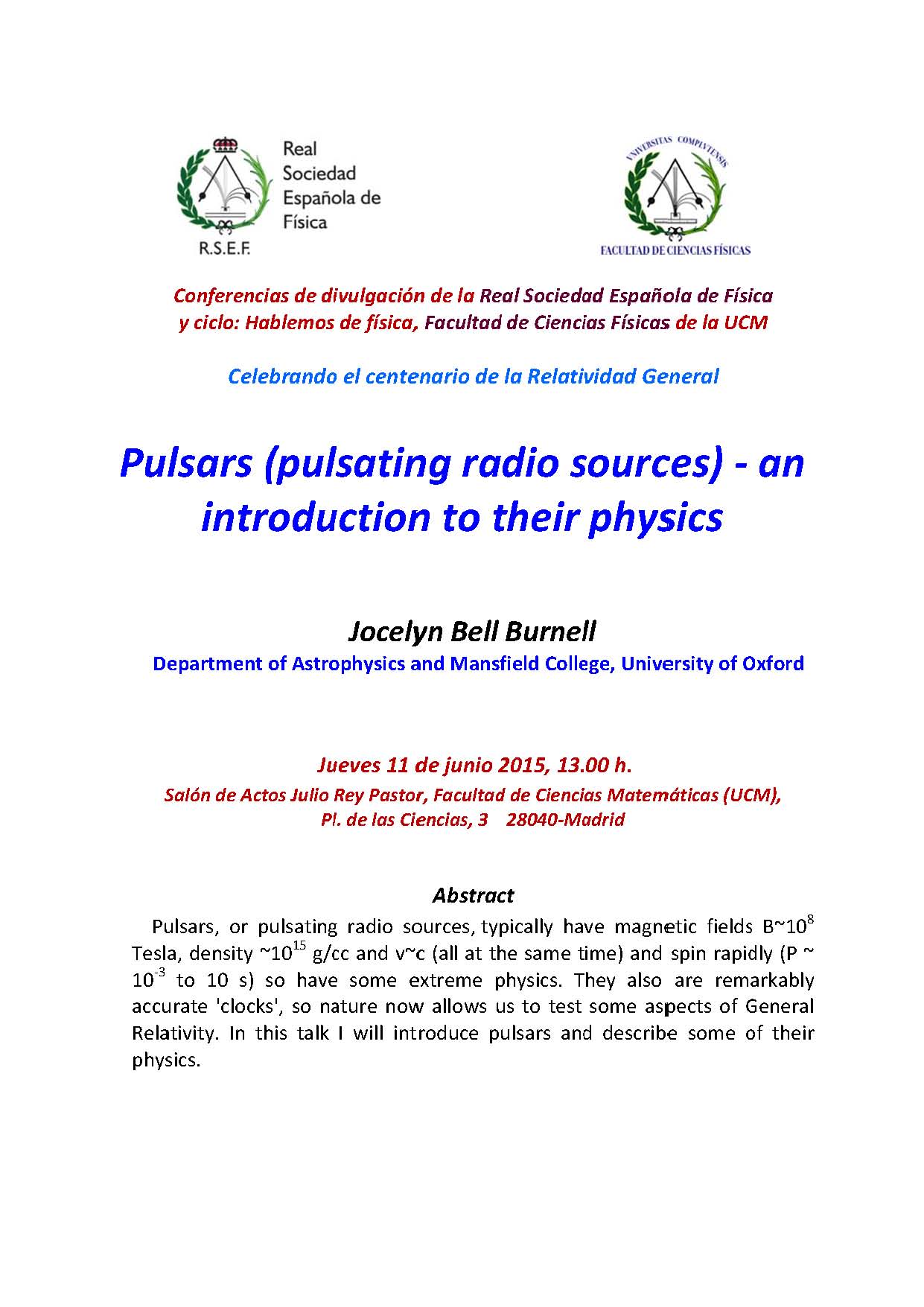 Título: "Pulsars (pulsating radio sources): an introduction to their physics"
Título: "Pulsars (pulsating radio sources): an introduction to their physics"
Conferenciante: Profa. Jocelyn Bell Burnell (Department of Astrophysics and mansfield College (University of Oxford)
Hora: 13h00m
Lugar: Salón de actos Julio Rey Pastor, Facultad Matemáticas, UCM
28 mayo 2015 - jueves
Título: "Winning the cosmic variance's challenge with ALHAMBRA"
Conferenciante: Dr. Carlos López Sanjuan (Centro de Estudios de Física del Cosmos, CEFCA, Teruel)
Hora: 12h00m
Lugar: Seminario de Astrofísica y CC de la Atmósfera en la planta 0, sala 2, ala oeste Facultad Físicas, UCM
Minicourse on Stellar Activity - Jeffrey Linsky (JILA/University of Colorado) - 23 al 29 Abril 2015
26 febrero 2015 - jueves
Título: "El bosón de Higgs y la Relatividad General: ¿malas noticias?"
Conferenciante: Prof. Álvaro de Rújula (IFT-UAM, CERN)
Hora: 13h00m
Lugar: Salón de actos, Facultad Matemáticas, UCM
4 febrero 2015 - miércoles
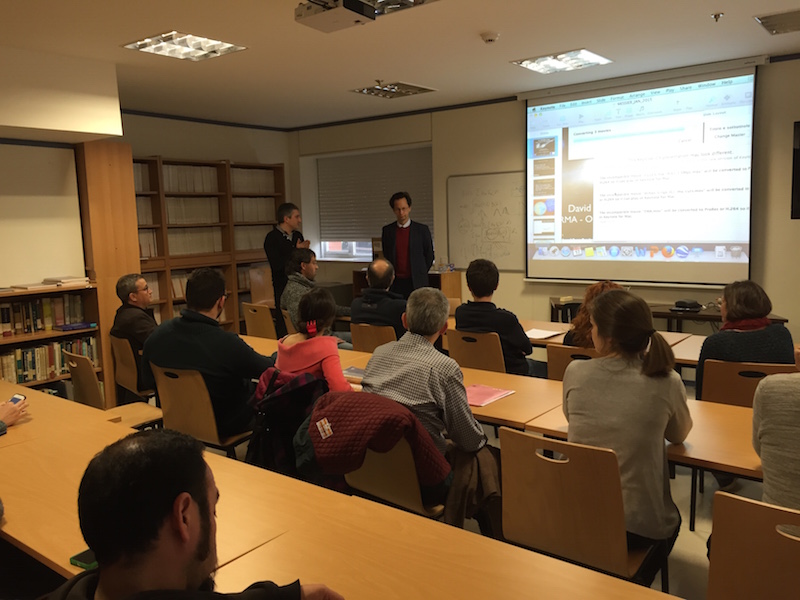
Conferenciante: Prof. David Valls-Gabaud (LERMA, Observatoire de Paris)
Hora: 16h30m
Lugar: Seminario del Dpto de Astrofísica y CC de la Atmósfera, Facultad CC Físicas, UCM
15 enero 2015 - jueves
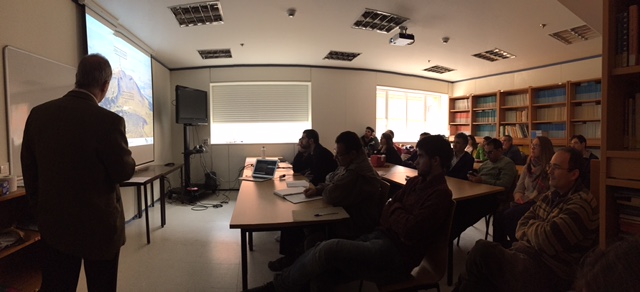
Cherenkov Observatory)"
Conferenciante: Prof. Alberto Carramiñana (INAOE, Instituto Nacional Astronomía, Óptica y Electrónica México)
Hora: 13h30m
Lugar: Seminario del Dpto de Astrofísica y CC de la Atmósfera, Facultad CC Físicas, UCM
12 enero 2015 - lunes
Título: "Hunting down systematics in baryon acoustic oscillations after cosmic high noon"
Conferenciante: Dr. Francisco Prada (IFT-UAM/CSIC)
Hora: 11h00m
Lugar: Sala de Seminarios, Departamento Física Teórica I (planta 3), Facultad CC Físicas, UCM
17 diciembre 2014 - miércoles
Título: "Hunting relic galaxies in the nearby Universe"
Conferenciante: Dra. Anna Ferré-Mateu (Subaru Observatory)
Hora: 11h00m
Lugar: Sala de Grados, Facultad CC Físicas, UCM
16 diciembre 2014 - martes
Título: "Búsqueda de Materia Oscura con el satélite Fermi”
Conferenciante: Miguel Angel Sanchez Conde (Universidad de Estocolmo)
Hora: 12h00m
Lugar: Seminario de Física Teórica I, Departamento Física Teórica I, Facultad de Físicas, UCM
16 diciembre 2014 - martes
Título: "Reactive collisions between atoms and molecules of astrochemical interest”
Conferenciante: Alexandre Zanchet (Dpto Química Física I - UCM)
Hora: 12h30m
Lugar: Sala de tesis de la biblioteca, Departamento Química-Física I, Facultad de Químicas, UCM
4 diciembre 2014 - jueves
Título: "Exploración espacial e inteligencia artificial. El proyecto World Space Observatory”
Conferenciante: Ana Inés Gómez de Castro (Matemáticas-UCM)
Hora: 13h30m
Lugar: Salón de Actos Juan Béjar, Facultad de Estudios Estadísticos, UCM
24 noviembre 2014 - jueves
Título: "Dusting off the stellar populations of AGN hosts with SHARDS"
Conferenciante: Antonio Hernán Caballero (IFCA)
Hora: 12h00m
Lugar: Tercera planta del Centro de Estudios de Física del Cosmos de Aragón (CEFCA)
21 noviembre 2014 - viernes
Título: "Clumpy star formation in high-z gravitationally lensed galaxies: The cosmic Snake case"
Conferenciante: Dr. Antonio Cava (Observatorio de Ginebra, Suiza) antiguo postdoc de la UCM
Hora: 12h00m
Lugar: Seminario del Dpto de Astrofísica y CC de la Atmósfera, Facultad CC Físicas, UCM
13 noviembre 2014 - jueves
Título: "First detection of gamma-rays from Type Ia supernova (SN2014J) with INTEGRAL"
Conferenciante: Dr. Eugene Churazov (MPIA, Alemania)
Hora: 10h30m
Lugar: Seminario del ESAC/ESA
06 noviembre 2014 - jueves
Título: "Direct search for dark matter at the Canfranc Underground Laboratory: the ANAIS experiment"
Conferenciante: Maria Luisa Sarsa, de la Facultad de Ciencias de Zaragoza
Hora: 12h00m
Lugar: Tercera planta del Centro de Estudios de Física del Cosmos de Aragón (CEFCA)
05 noviembre 2014 - miércoles
Título: "Stellar populations in AGN host galaxies: the SHARDS perspective"
Conferenciante: Dr. Antonio Hernán Caballero (IFCA, Cantabria)
Hora: 12h00m
Lugar: Seminario del Dpto de Astrofísica y CC de la Atmósfera, Facultad CC Físicas, UCM
03 noviembre 2014 - lunes
Título: "Métodos estadísticos para la detección Automática de nubes galácticas en imágenes astronómicas"
Conferenciante: Dr. Javier Portolés
Hora: 17h30m
Lugar: Escuela universitaria de Estadística - UCM | Edificio Fisac - Pensamiento | Avda. Puerta de Hierro s/n | 28040 Madrid
30 octubre 2014 - jueves
Título: "Potential for Cosmic Neutrino Detection from Space Based Cosmic Ray Observatories: with specific application to the JEM-EUSO mission"
Conferenciante: Dr. B. Vlcek (Universidad de Winsconsin/Milwakee, USA)
Hora: 15h00m
Lugar: Grupo de Espacio y Astropartículas de la Universidad de Alcalá (Madrid)
29 octubre 2014 - miércoles
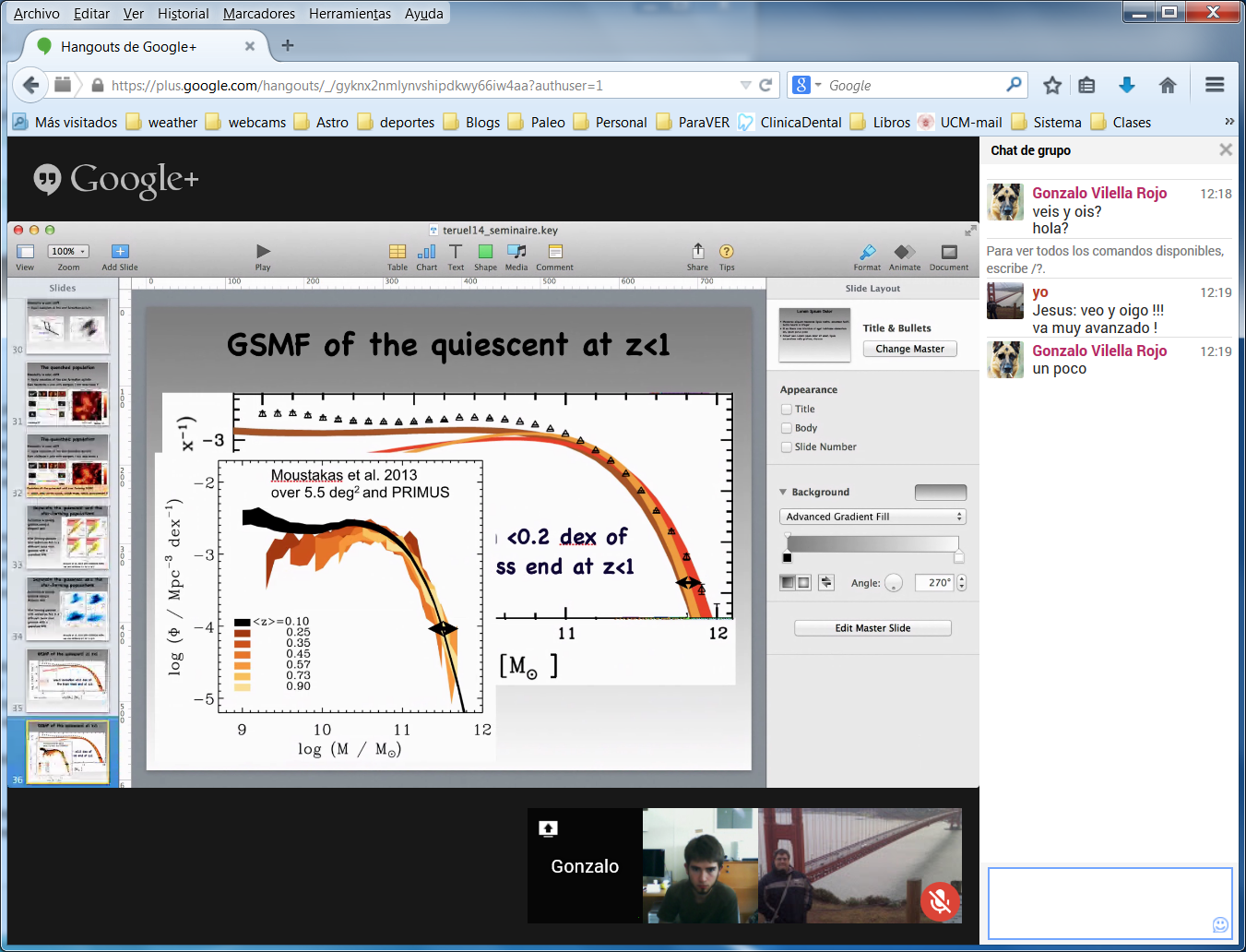 Título: "Photometric redshifts and stellar mass assembly in the COSMOS field"
Título: "Photometric redshifts and stellar mass assembly in the COSMOS field"
Conferenciante: Dr. Olivier Ilbert (LAM, Marsella)
Hora: 12h00m
Lugar: Tercera planta del Centro de Estudios de Física del Cosmos de Aragón (CEFCA)
24 de octubre 2014 - viernes
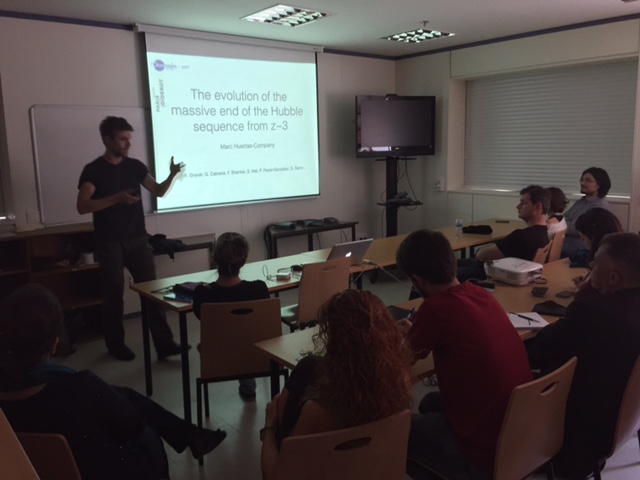
Conferenciante: Dr. Marc Huertas-Company (University of Paris 7, Observatoire de Paris - Meudon)
Hora: 12h00m
Lugar: Seminario del Dpto de Astrofísica y CC de la Atmósfera, Facultad CC Físicas, UCM
10 de octubre 2014 - viernes
Título: "Las interacciones galácticas como causa de galaxias activas luminosas"
Conferenciante: Dra. Cristina Ramos Almeida (IAC)
Hora: 12h00m
Lugar: Seminario del Dpto de Astrofísica y CC de la Atmósfera, Facultad CC Físicas, UCM
07 de octubre 2014 - martes
Título: "Revealing the old light: 3.6 micron mass maps of nearby galaxies and their applications"
Conferenciante: Miguel Querejeta (MPIA)
Hora: 13h00m
Lugar: Seminario del Dpto de Astrofísica y CC de la Atmósfera, sala 2, planta baja, Facultad CC Físicas, UCM
03 de octubre 2014 - viernes
Título: "Massive Galaxy Formation through the ULIRG phase at z~2"
Conferenciante: Dr. Jiasheng Huang (CfA, Harvard)
Hora: 12h00m
Lugar: Seminario del Dpto de Astrofísica y CC de la Atmósfera, Facultad CC Físicas, UCM
19 de septiembre 2014 - viernes
Título: "Hubble Space Telescope: Piecing Together the Workings of the Universe"
Conferenciante: Dr. Robert Williams Space Telescope Science Institute (Baltimore)
Hora: 12h00m
Lugar: Sala de seminarios, CEFCA, Teruel
Abstract: In orbit for 24 years and still operating well, in planning and development for 15 years before that, HST was the most expensive
scientific project in history until CERN's LHC. Its unique features of high spatial resolution, ultraviolet sensitivity, and low sky background
together with its unified, well calibrated, publicly available data archive have produced many notable astronomical discoveries. Highlights
of Hubble Telescope's scientific mission will be discussed in the context of processes that have been key to our current understanding of the
evolution of the universe from the earliest times to the present epoch. These include gravitational lensing, the Hubble deep fields which have
revealed early galaxy formation, galaxy mergers that form black holes, and the initial attempts of analysis of the atmospheres of planets around
other stars.
18 de septiembre 2014 - jueves
Título: "The Growth channel of massive galaxies"
Conferenciante: Dr. Ignacio Trujillo (IAC)
Hora: 15:00
Lugar: Sala de seminarios, CEFCA, Teruel
18 de septiembre 2014 - jueves
Título: "The Planck SZ Galaxy Clusters: a reference sample for cosmology"
Conferenciante: Jose Alberto Rubino-Martin
Hora: 12h00m
Lugar: Sala de seminarios, CEFCA, Teruel
Abstract:
Link a Seminarios del curso 2013-2014
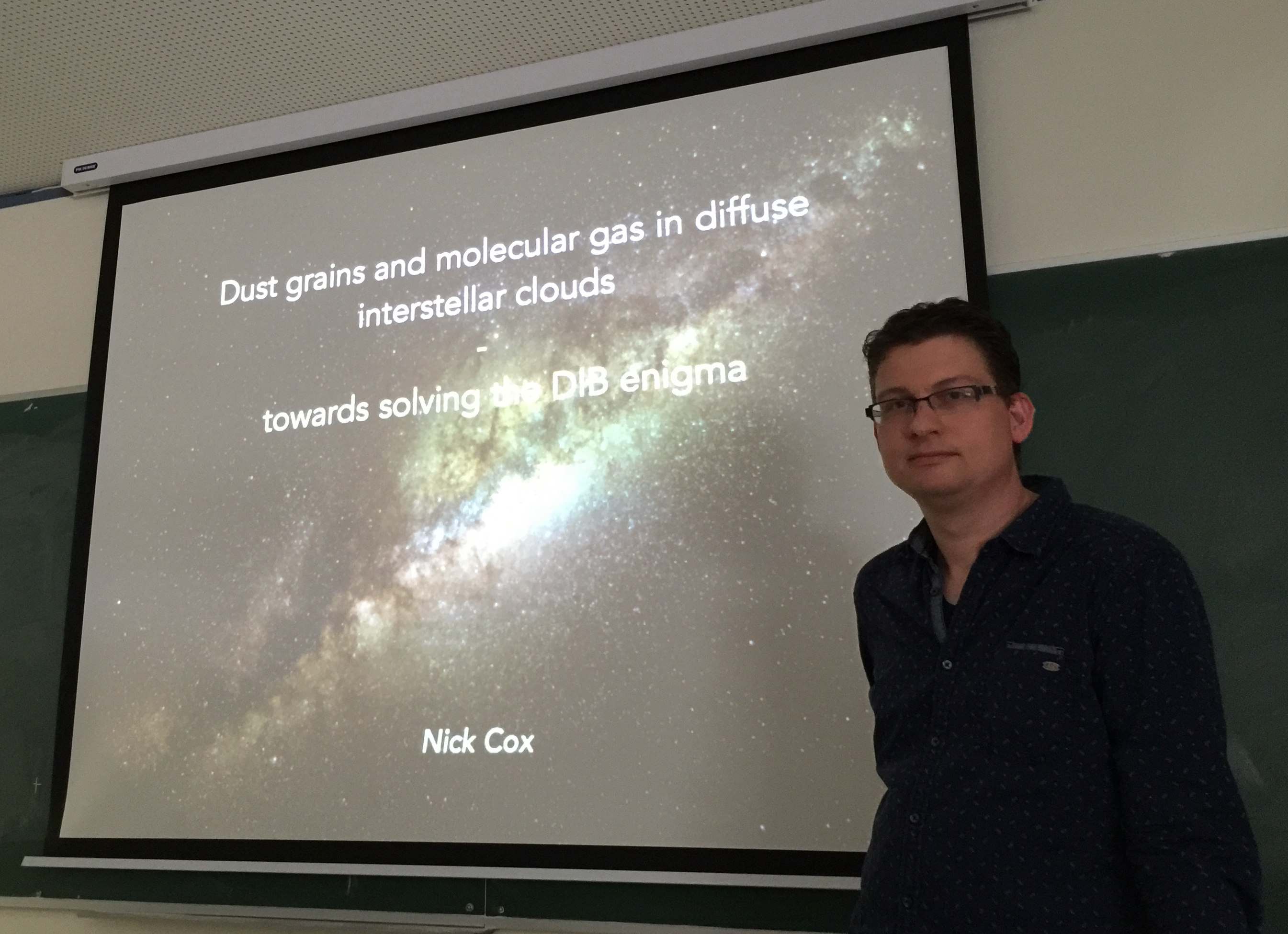
Seminarios UCM
La Universidad Complutense de Madrid ofrece "UCM-Directo", un servicio de podcast para seminarios especializados de máximo nivel. Las grabaciones de los seminarios están disponibles de manera gratuita.
Para ver la oferta de cada año, visitar este link
